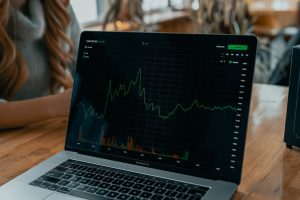Forex trading requires a significant amount of capital to be invested. To ensure that traders have enough capital to cover potential losses, forex brokers require a certain amount of margin to be deposited into the trader’s account. The required margin is the minimum amount of funds that must be available in the account to open and maintain a position.
In simpler terms, margin is the collateral that traders are required to provide to their brokers to open and maintain positions. It is a percentage of the total value of the position that traders are taking. The amount of required margin varies depending on the broker, the currency pair being traded, and the amount of leverage being used.
Leverage is the amount of money that a broker lends to a trader to increase the size of their position. It is expressed as a ratio, such as 50:1 or 100:1. For example, if a trader has a leverage ratio of 100:1, they can control a position worth $100,000 with only $1,000 in their account. While leverage can magnify profits, it can also magnify losses, making it essential for traders to manage their risk through the use of stop-loss orders and proper position sizing.
The required margin is calculated based on the size of the position and the leverage being used. For example, if a trader wants to take a position worth $10,000 and has a leverage ratio of 50:1, they would need to deposit $200 in their account as margin. This is calculated by dividing the value of the position by the leverage ratio (10,000/50 = 200).
Margin requirements vary depending on the currency pair being traded. This is because some currency pairs are more volatile than others, meaning they have a greater potential for large price swings. For example, the margin requirement for trading the EUR/USD pair is typically lower than the margin requirement for trading exotic pairs like the USD/TRY or the USD/ZAR.
Margin requirements can also vary between brokers. Some brokers may offer higher leverage ratios, which can reduce the amount of margin required to open and maintain positions. However, higher leverage ratios also increase the risk of large losses, so traders should carefully consider their risk tolerance before using high leverage.
In addition to the required margin, brokers may also require traders to maintain a minimum account balance. This is known as the margin call level, and it is the level at which the broker will automatically close out positions to prevent further losses. If a trader’s account balance falls below the margin call level, they will be required to deposit additional funds to maintain their positions or risk having them closed out by the broker.
Managing margin and risk is crucial to successful forex trading. Traders should always be aware of their margin requirements and ensure that they have enough funds in their account to cover potential losses. They should also use stop-loss orders to limit their losses and avoid over-leveraging their positions.
In conclusion, the required margin is the minimum amount of funds that traders must deposit into their accounts to open and maintain positions. It is calculated based on the size of the position and the leverage being used. Margin requirements can vary between brokers and currency pairs and traders should always be aware of their margin requirements and manage their risk appropriately.





